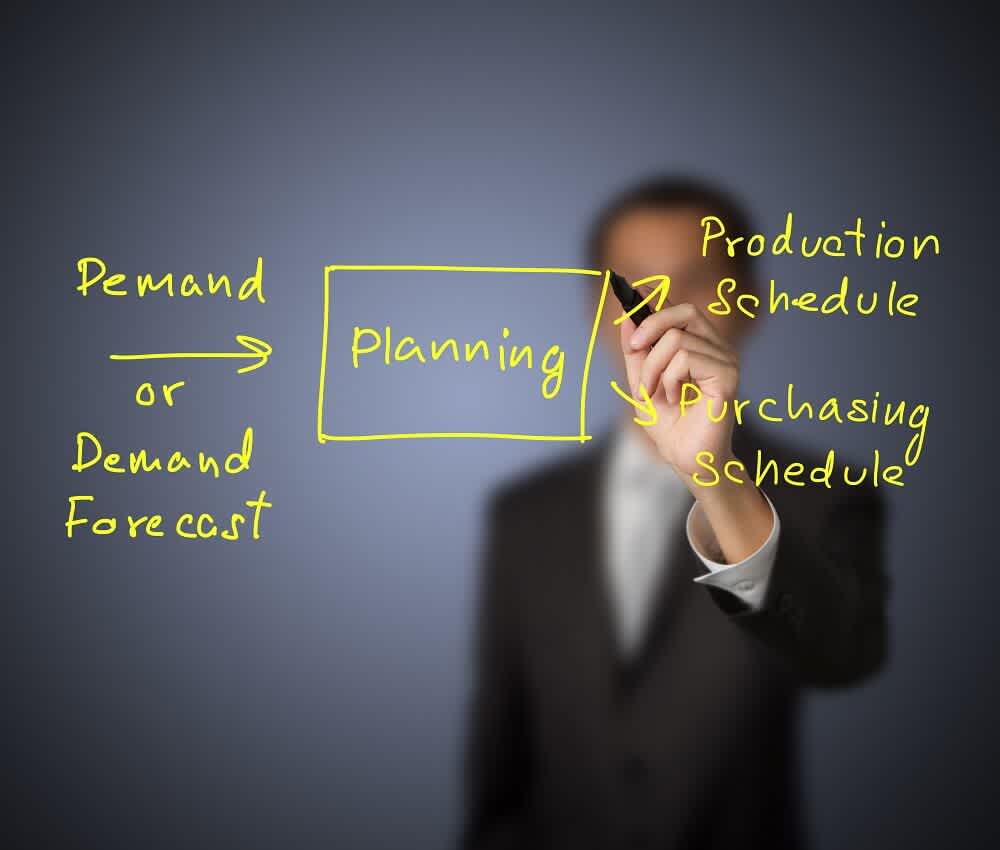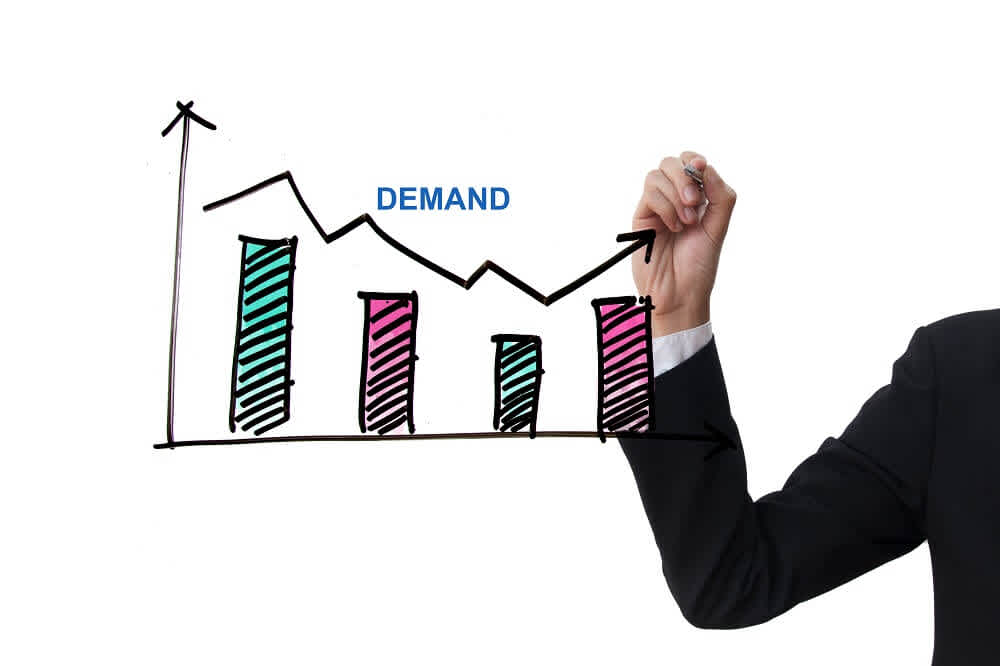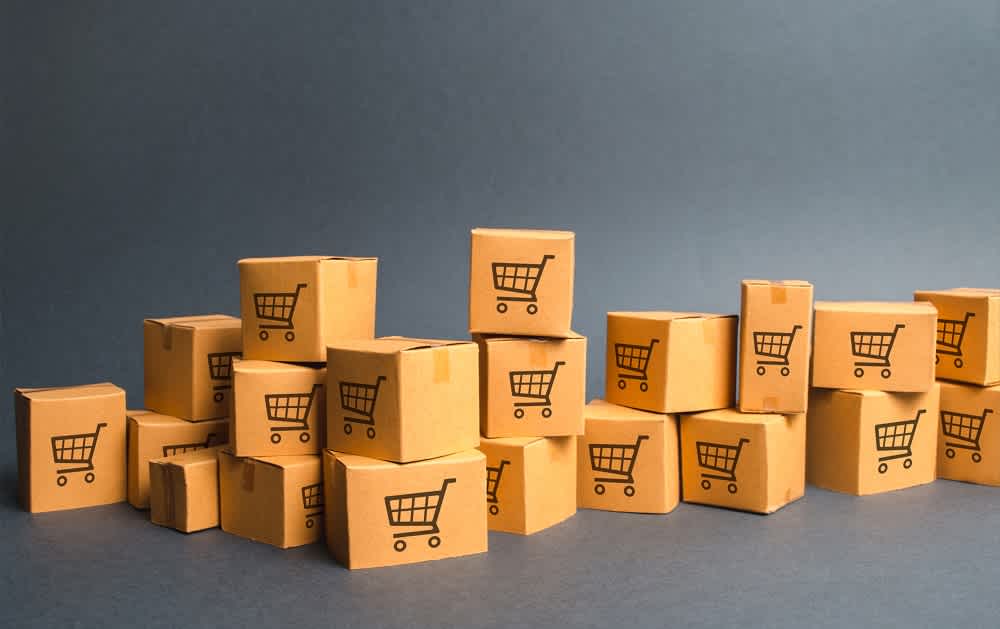
by James Hickson | January 12, 2022 | 12 min read
What is demand forecasting? The importance and benefits of forecasting future customer demand
Get fundedLast updated: April 18, 2022
Demand forecasting is one of the most important processes for any business, including ecommerce businesses. But many companies struggle with their demand forecasting and fail to take advantage of the significant benefits it provides when carried out successfully.
In this guide, we look at what demand forecasting is, why it is so important for your business, different methods you can use, and how to do it properly.
Table of contents
- What is demand forecasting?
- Why is it important to forecast demand?
- The importance of demand forecasting for ecommerce businesses
- Demand forecasting example
- How do you calculate future demand?
- Factors influencing the customer demand lifecycle
- Types of demand forecasting
- Key demand forecast metrics
- What makes a good demand forecast?
- Demand forecasting issues most companies face
- Conclusion
What is demand forecasting?
Demand forecasting is essentially the process of estimating the demand for your business’s products or services in the future.
This is achieved by gathering information relating to past demand, such as by analysing historical sales data, and using it to estimate future demand.
When you have a clear understanding of how much demand you will have for certain products over a set period, you can use this information to your advantage and make more informed decisions about various things, from product pricing to growth strategies.
Failing to consider demand forecasting for your products and target market can seriously affect customer satisfaction, profitability, inventory holding costs, and more.
Forecasting projections is difficult and can be a challenge to get right. But following proven strategies can help to improve your sales forecasting so you can enjoy the benefits it brings for your business.
Why is it important to forecast demand?

There are several reasons why it is so important to forecast demand:
Inventory management
Firstly, forecasting demand is essential for good inventory management. You need to have a good idea about the demand for certain products at certain times of the year in order to have enough inventory. Optimising your inventory more efficiently can increase inventory turnover and reduce holding costs.
Business planning
Business owners and managers need to make important decisions surrounding budgets, product procurement, and other factors. If you know what your sales are likely to be, this helps you make more informed decisions in many business areas.
Cash flow
Demand forecasting also provides insight into cash flow, which can help when budgeting to pay your suppliers and other related costs. Managing cash flow more effectively can help ensure you have more money to invest in growing your business.
Identify sales pipeline issues
You can also use demand forecasting to identify problems in the sales pipeline that you may have missed. When you identify these problems, you can do something about them and improve business performance.
Recruitment
If you can anticipate demand accurately, you will have a much better idea about when to employ new staff members and when you should be spending on other resources, helping to make sure everything runs smoothly in peak periods.
Marketing strategies
Effective demand forecasting allows you to plan your marketing strategies more effectively and budget for them accordingly. Whether that means running more social media ads at a particular time of year or launching sales events to make up for periods of lower demand, it can help you spend your marketing budget more effectively.
Make better decisions
Essentially, forecasting demand helps with decision-making in many areas of your business. Making better decisions can give you the edge over your competitors and help you plan better for future events like sales events. It is a key business process that helps you to devise your operational and strategic plans, budgeting, financial planning, sales plans, marketing plans, long-term plans, short-term plans, and more.
The importance of demand forecasting for ecommerce businesses

Demand forecasting is just as important for ecommerce businesses. You need to develop a detailed understanding of demand in order to make the right decisions for your ecommerce business, especially around production and marketing.
Budgeting
Let’s start with the budget. You need to prepare a budget to reduce risks and make the best financial decisions for your business. Your decisions will impact cash flow and affect resource allocation, profit margins, expansion opportunities, overall spending, and more.
Production planning
Production planning is also important for ecommerce businesses. You want to make sure you can provide your customers with the products they want at the moment they want them.
Being sold out is a bad look, especially if it happens too often or for too long. It also means you’re not making sales when you could be. But by forecasting demand effectively, you can make sure you always have enough inventory.
Avoid excess inventory
It also helps to prevent having too much inventory, so you don’t waste money on warehousing. You want to make sure you have enough without having too much.
You can achieve this by tracking inventory levels closely over time, giving you a much better idea of how much inventory you will need and helping reduce the chances of suffering rush charges and scrambling to fill all the orders.
Seasonal trends
You can also use historical sales data to uncover seasonal trends and fluctuations. You will already have a good idea about holiday seasons but look beyond these to find out when customer demand is lower. A lack of demand one month means this could be a great time to run a sale.
Unexpected events
It can also help you to plan for the unexpected. This could be something large like a pandemic or something smaller like the arrival of a new competitor on the scene. Use demand forecasting to prepare adequately and put yourself in a position to deal better with shocks.
Demand forecasting example
What does demand forecasting look like in real life? Let’s look at the following example.
Let’s say you run an ecommerce store offering a wide range of gift products. Clearly, Christmas is going to be an important sales period for you. But if you don’t have a clear idea about the demand, you could end up failing to stock enough of your best-selling products.
As a result, when customers visit your store, they are left disappointed, and they head to one of your competitors to find what they are looking for. You may have spent a considerable amount on marketing to direct these customers to your website in the first place, and not only have you lost the sales you could have made, but the risk is that they will not return.
But by using demand forecasting, you can have a clear idea about the demand you can expect for the different products in your store. You could perhaps do this by analysing sales trends over the weeks leading up to Christmas in previous years.
As such, you make sure you have plenty of your best-selling products in stock, leading to an increase in future sales and happy customers who are more likely to return to your store.
This example clearly shows the importance of even the most basic type of demand forecasting. Lots of other factors can go into it, as we will look at later on, including competition, marketing techniques, changes in sales over previous months, economic conditions, and more.
How do you calculate future demand?
Future demand can be calculated using a few key steps:
The first step is deciding on your objectives. You need a clear idea of what customers will purchase and when they will purchase it. It could focus on a specific time period, a specific product, a category, or a customer group.
You then need to use historical sales data integrated from all sales channels to better understand the product demand. This will provide you with more insight into order dates, times, SKUs that were ordered, sales channels and more.
Finally, you can then compare the results with what you predicted. Data analysis can be done manually or by using automation, and your findings can then be used to improve future forecasts, which will become an ongoing process.
Factors influencing the customer demand lifecycle

Many factors have a big impact on customer demand, which is one of the most important aspects of demand forecasting. It’s important to know what these are for your niche to ensure the supply chain side is in sync with sales and marketing.
Seasonality
Seasonality is one of the most important factors. Essentially, order volume will change depending on the season and time of year. The most obvious example is the festive season, where many companies see increases in order volume in the weeks leading up to Christmas. Some brands are more seasonal than others and can be affected more.
Seasonality also relates to major industry events. For example, a book publisher may see a huge spike in sales in the weeks following a major sales event like the Frankfurt Book Fair, and this can be built into the demand forecasting model.
Competition
Competition is another factor. The amount of competition you face has an impact on demand. So when a new shop opens in your niche in your local area, customers will suddenly have more choice, and demand is skewed, which can have a big impact on your sales forecasts. This is why it’s important to be flexible with demand forecasting so you can respond quickly.
Product or service type
Product type is also a consideration. Some products and services will have different demand forecasting. For example, selling individual perishable goods is very different from selling subscription boxes. Factors like the lifetime value of customers, average order value, which products they order, and more, are all important factors to consider.
Types of demand forecasting
There are three main types of demand forecasting:
Time series – this method is useful where you have historical data for a product and clear trends, which is why it is used primarily by well-established businesses. It can be a good way to work out seasonal demand changes and sales trends to predict future sales more effectively.
Qualitative – this method is used when there isn’t much data available and is, therefore, a good option for a new business or when launching a new product. It includes things like carrying out extensive market research and gathering expert opinions.
Causal – this is a more sophisticated method of demand forecasting that uses very specific information and takes in various factors that affect demand like competitors, marketing budget, socioeconomic factors, historical data, competitors, and more.
There is also short-term forecasting, which could be for six months, and long-term forecasting, which is typically for two or more years and helps with larger strategic decisions.
You may also hear about macro and micro-level forecasting. Macro looks at economic conditions and factors that could disrupt commerce, while micro focuses on factors specific to the industry or business.
Key demand forecast metrics
It’s important to define demand forecast metrics so that you can track them effectively. Tracking the following key metrics will help you create more accurate forecasts:
Sales period – the sales you expect from the product over a set period of time.
Stock levels – the number of products you need to stock to meet demand.
Lead time – how long it takes from purchasing an order to being in the position to sell the product.
Purchase costs – the amount of cash you need to make your purchases.
Days payable – the number of days you have to pay inventory costs.
What makes a good demand forecast?

There are several boxes a demand forecast needs to check in order to be effective. A good demand forecast should be:
Accurate
At the very least, a good forecast should be as accurate as possible. There is no point in having an inaccurate demand forecast because this will only hurt your business. This happens when you use inaccurate or incomplete information. Whatever technique you use must be accurate.
Flexible
It should also be flexible. Running a business demands flexibility. Being too rigid can lead to delaying decision-making and taking action. You need to react to changes, like a new competitor or a new product arriving on the scene that can affect customer demand. This can turn your previous demand forecasting on its head, so you need to react fast.
Consistent
Demand forecasting should also be consistent. It should be something you do every year, and this allows you to learn from previous mistakes and increase the accuracy of your forecasting every year.
Economical
You should also make sure it is economical. Demand forecasting is a labour-intensive process that can be very time-consuming. Consider this when choosing a suitable method because the benefits must outweigh the costs involved.
Demand forecasting issues most companies face

While demand forecasting should be considered an essential practice, many companies face difficulties.
Accurate data – first of all, you need to ensure you have the best information using accurate data. One of the biggest problems is when you don’t have accurate data or when data is missing.
Sales data – having access to detailed sales data is not always possible, such as when you are just starting out. But established businesses also struggle with this. Gather sales data and compile it in a format that you can use easily in your demand forecasting.
Supply chain management – if your supply chain is unpredictable, or if you are not managing it properly, no amount of demand forecasting will help. This means knowing the lead times for sourcing materials for producing finished products and for shipping to your fulfilment centre.
Inventory control management – this is the very foundation of good demand forecasting. Knowing what you have in your warehouse at all times will help you to avoid overestimating or underestimating production.
Conclusion
Demand forecasting is an essential part of running a business. It helps you, as a business owner, make more informed decisions that have a big impact on a wide range of factors, from inventory planning to supply chain management, ensuring you have products in stock and can react to unexpected problems quickly.
While it is never completely accurate, demand forecasting can help you make huge improvements in factors from lead times to cash flow and product launches. Use effective demand forecasting to be more agile in your business and adapt to changes quicker, improve cash flow and the customer experience, boost operational efficiencies and grow your business more successfully.
Written by
James Hickson is the CEO and Founder of Bloom Financial Group, the winner of numerous industry awards – most recently recognized as FinTech CEO of the year as well as Payment Service of the year by AI Global Media.
Bloom is a European Fintech company focused on small to medium business lending. With their proprietary technology, Bloom offers e-commerce and retail brands access to revenue based funding (between 25,000 EUR and 3M EUR).


